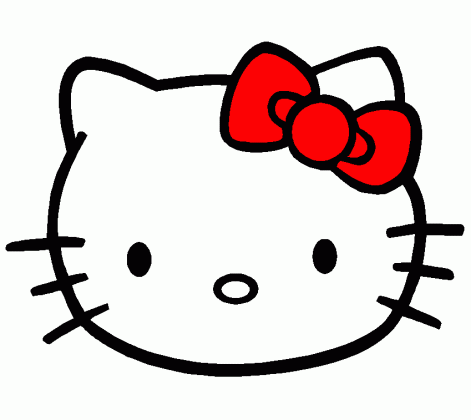Sexism is so normalized that we don’t even notice that this iconic female character doesn’t have a mouth—the body part that would allow her to speak her mind.
I remember walking into the Sanrio store as a little girl and thinking I had landed in heaven. No other store in our suburban mall carried what I needed to survive elementary school: lunch boxes, pencils and their holders, markers, erasers, and so much more. We used to call it “the Hello Kitty store” because the famous white feline’s face—with her black eyes, yellow nose, three whiskers on each cheek, and pink bow over her right ear—appeared on every product.
Once I aged into double digits, I forgot about Hello Kitty and didn’t think about her again until the year 2000 when my friend Kristina Wong decided to give the cat a mouth for her undergrad thesis. “Hello Kitty doesn’t have a mouth?” I gasped. Certainly as a girl I had received way more attention for looking cute than I had for speaking my mind, but how could I have gazed at her adorable face for so many years without noticing?
In the last 40 years, Hello Kitty has generated billions of dollars for the Japanese company Sanrio and today it’s plastered in more places than ever: on microwaves and toasters, cars and airplanes, even on sports paraphernalia for the Dodgers. No one knows how the famous cat feels about that, of course, because she can’t talk and shows no emotion, which, as you might guess, makes me cringe.
According to an interview published in the LA Times this week, Christine Yano, author of Pink Globalization: Hello Kitty’s Trek Across the Pacific, argues that “Hello Kitty works and is successful partly because of the blankness of her design. People see the possibility of a range of expressions. You can give her a guitar, you can put her on stage, you can portray her as is. That blankness gives her an appeal to so many types of people.”
Yano is curating a Hello Kitty exhibit for the Japanese American Museum and sent some documents to Sanrio for approval. The company corrected her script, stating: “Hello Kitty is not a cat. She’s a cartoon character. She is a little girl. She is a friend. But she is not a cat. She’s never depicted on all fours. She walks and sits like a two-legged creature. She does have a pet cat of her own, however, and it’s called Charmmy Kitty.” Oh, and she lives outside London, loves apple pie, and is perpetual third grader. Yes, that’s right, she’s British and never ages.
Since this news broke, the outcry has exploded from the mainstream press to fans across social media. “How can Hello Kitty be a girl? Girl’s don’t have whiskers!” they yell. Yet, I haven’t seen anyone shout, “How could she be a girl? GIRLS HAVE MOUTHS!”
“It’s that Asian girls are expected to be quieter,” well-intentioned white people tell me. It’s true that Hello Kitty has been embraced particularly by Asians and Asian Americans, but she’s loved all over the world. Besides, the idea that Asian women are more oppressed and Asian societies are more sexist is rooted in Western racism that deems U.S. and European societies and women freer than the rest of the world. The White House reports that women in the U.S. earn as low as 77 cents for every dollar earned by a man, showing that we Americans have a long way to go, baby. Sexism and male domination, like Hello Kitty, are global phenomena.
The expectation, as represented by Hello Kitty, is that women are docile, quiet, and cute creatures to be looked at and not heard.
For the first time ever this fall, a Hello Kitty Con will take place. I’m not arguing that Hello Kitty fans are passive, quiet, and into submissiveness; I am proposing that sexism is so normalized that we don’t even notice that this iconic female character, which is specifically marketed to females, lacks the body part that would allow her to speak her mind. Sure, she could communicate using her hands, by writing, or sign language, but she’s not differently-abled—she’s mute because she doesn’t have a mouth.
Now imagine if a billion-dollar company targeted boys with toy soldiers or baseball players that didn’t have mouths. Can you even picture it?
A girl-power icon without a voice can’t empower girls. When my cousin Michaela turned 5, I gave her a nylon Hello Kitty doll and a marker. We drew a mouth on her new doll together.
Stephanie Abraham blogs at Feminist in the Suburbs.
Related Links:

